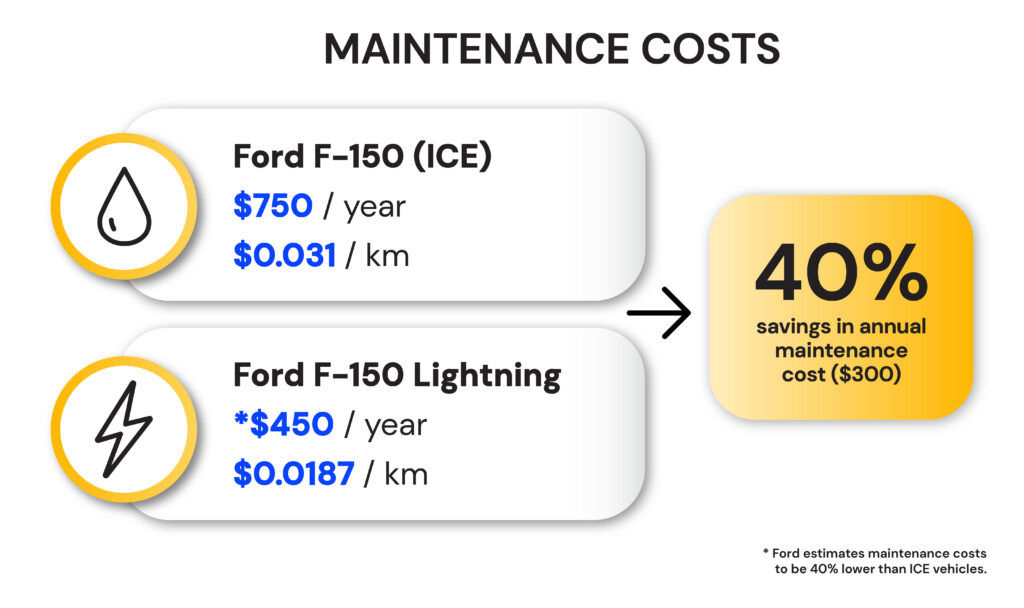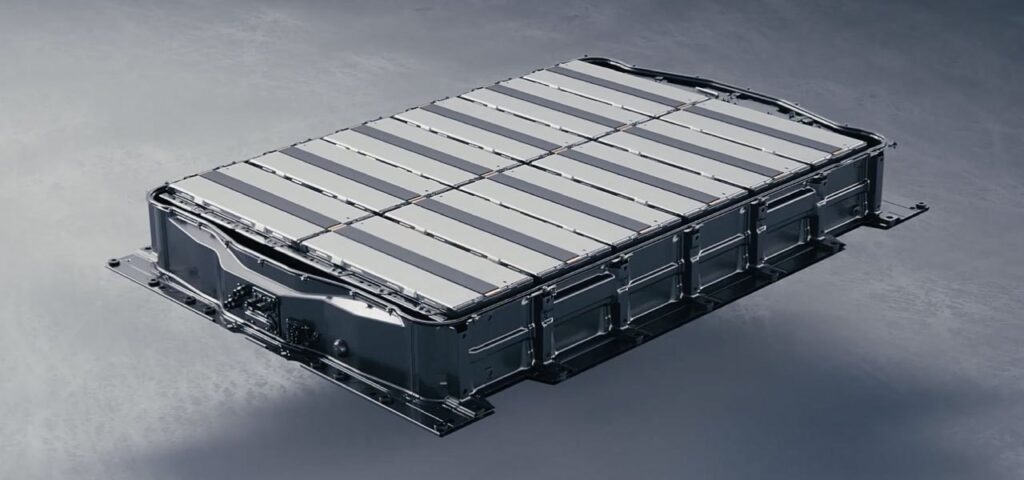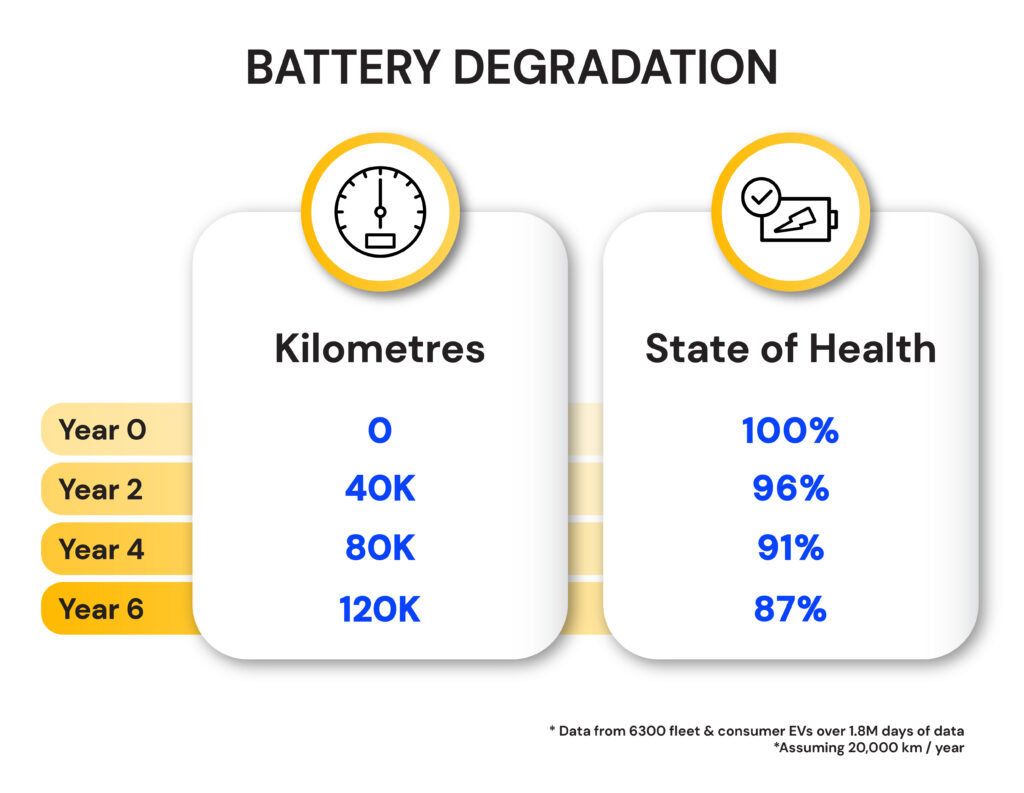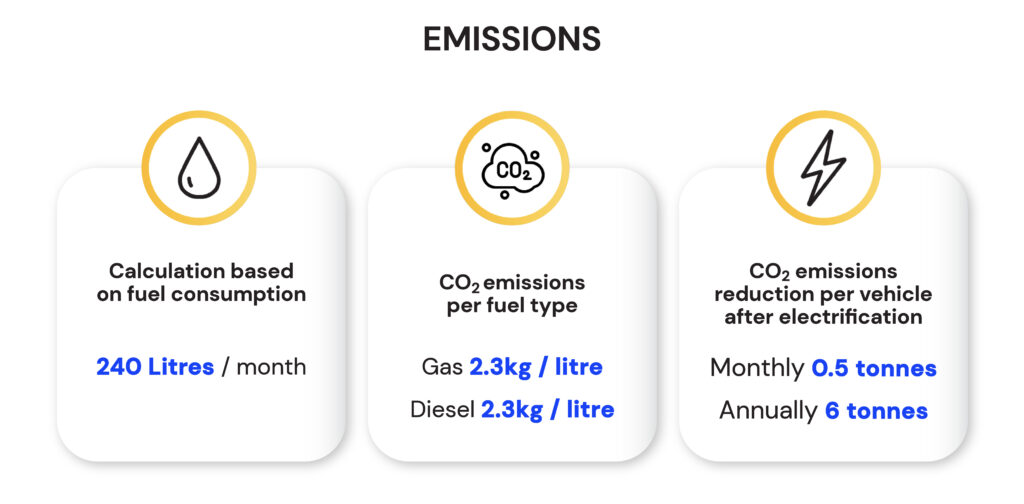Vehicle maintenance has to be considered in any electric vehicle lifecycle cost assessment. With no internal combustion engine, EVs have fewer moving parts and systems that require regular care or maintenance. The average electric motor has about 20 moving parts, whereas an internal combustion engine (ICE) has more than 2,000. This is a big reason why EV maintenance is less demanding.
Why EVs require less maintenance
A gas-powered vehicle will need oil changes on a regular basis, along with attention to belts, coolant, exhaust systems, and the electrical system including spark plugs, coils and the alternator. The brake pads and rotors on a combustion vehicle get much more use and will need regular replacement, especially when the vehicle is used on routes with lots of stop-and-go driving.
On the flipside for EVs, the most common fluid top-up will simply be windshield washer fluid! The brakes get less use when regenerative braking is used, though do factor in annual lubrication at the cost of roughly $100 per vehicle to prevent brake corrosion, particularly in areas where road salt is used. (Note that EVs, in addition to the high-voltage batteries that run the powertrain, are also equipped with 12-volt old-school car batteries to power accessories and systems such as the door locks, lights and main computer.)
Learn more: EV versus ICE walkaround and maintenance lists
EVs do experience slightly higher tire wear, due to the extra weight of batteries and greater torque applied through the wheels to the ground. (Tires are covered in depth in the next topic.) This is estimated to be around 20 per cent more with conventional tires than on a comparable ICE vehicle, according to Michelin1. However, new EV-specific tires coming onto the market promise to mitigate this issue.
Some EVs may also require periodic replacement of the battery coolant fluid, which can cost hundreds of dollars every few years.
Maintenance costs for an EV fleet are forecast to be 40 per cent less than for an ICE fleet2. Not only will you save on EV maintenance itself, your fleet will have less costly scheduled downtime, and should have fewer unanticipated breakdowns.

While this is a rare occurrence, when an electric vehicle does experience an issue requiring warranty repair, the wait times can be longer due to parts availability and the complexity of diagnosing the vehicle issue. For instance, if a faulty fuel cell needs to be replaced, the new cell pack may need to be shipped in and then charged up separately by a specialist before being reinserted into the main battery.
Durability: how long will the battery in an EV last?
One of the biggest worries of fleet owners is whether or not the batteries will remain viable for the working life of the vehicle, since they are by far the most expensive part of the vehicle. All batteries lose some of their capacity over time because of the effect of charging on the chemistry of the battery. This is called battery degradation. The good news: with recent advances in battery technology, it’s not a serious issue for fleets that properly manage their batteries.

Geotab, a fleet telematics company, analyzed EV user data and determined that the typical battery loses 2.3 per cent of its capacity per year3, or a loss of 27 kilometres over five years for a vehicle with a 240-km range. The 2019 study by Geotab found that “the vast majority of batteries will outlast the usable life of the vehicle.”

At the moment, EV manufacturers in the U.S. are required to offer an eight-year, 160,000 kilometre battery warranty and most automakers offer the same for Canadian buyers4. By comparison, the typical warranty on an ICE vehicle’s drivetrain is 100,000 km and five years.
The biggest impact on battery chemistry comes from high-kW DC charging (150 kW and up), so its use should be limited as part of your overall charging strategy. Many EV owner manuals will recommend minimizing the use of fast-charging.
Sustainability
Many companies are adopting electric fleets to help meet sustainability targets since EVs generate no tailpipe emissions or GHGs. Electric vehicles also beat ICE vehicles with lower total overall carbon emissions, from cradle to grave. (This includes mining, manufacturing, energy grid emissions and end-of-use recycling.5) For companies that have strict carbon emissions targets to meet, an all-EV fleet could help reduce costs significantly, by removing the need to purchase offsets.

Time savings
In addition to the time savings gained as a result of lower maintenance, EVs also save drivers from pulling over to fill up on gas or diesel. In B.C., in Quebec and on some highways in Ontario (the 400-series highways and the QEW) drivers have access to high-occupancy vehicle (HOV) lanes, where they can save travel time by bypassing traffic.
Adding electric vehicles to your fleet may at first seem to increase costs, but when you balance the costs over the lifespan of the vehicle — and consider that EV resale values are improving all the time — electrification can make a very noticeable impact on your organization’s bottom line. The next step is to evaluate which particular vehicle or vehicles you should consider acquiring and where they can help you.
Rebates and subsidies
Vehicle and charging infrastructure subsidies can play a major role in reducing total lifecycle costs, and startup costs in particular. Federal and provincial governments and electric utilities alike are offering significant rebates, grants and tax incentives to help with the purchase and operational costs of electric fleets. In some provinces, you can even get funding support for suitability assessments and advisory services from experts.
Next: Learn all about EVs and tires.
Reproduction of any or all of this material is strictly prohibited without permission. Please contact fleets@electricautonomy.ca for inquiries. Copyright © 2025 – Electric Autonomy Canada – ArcAscent Inc. – All Rights Reserved
Want to learn more? Sign up or log in so you can track your progress, earn a course certificate and receive exclusive invitations to our live learning sessions.